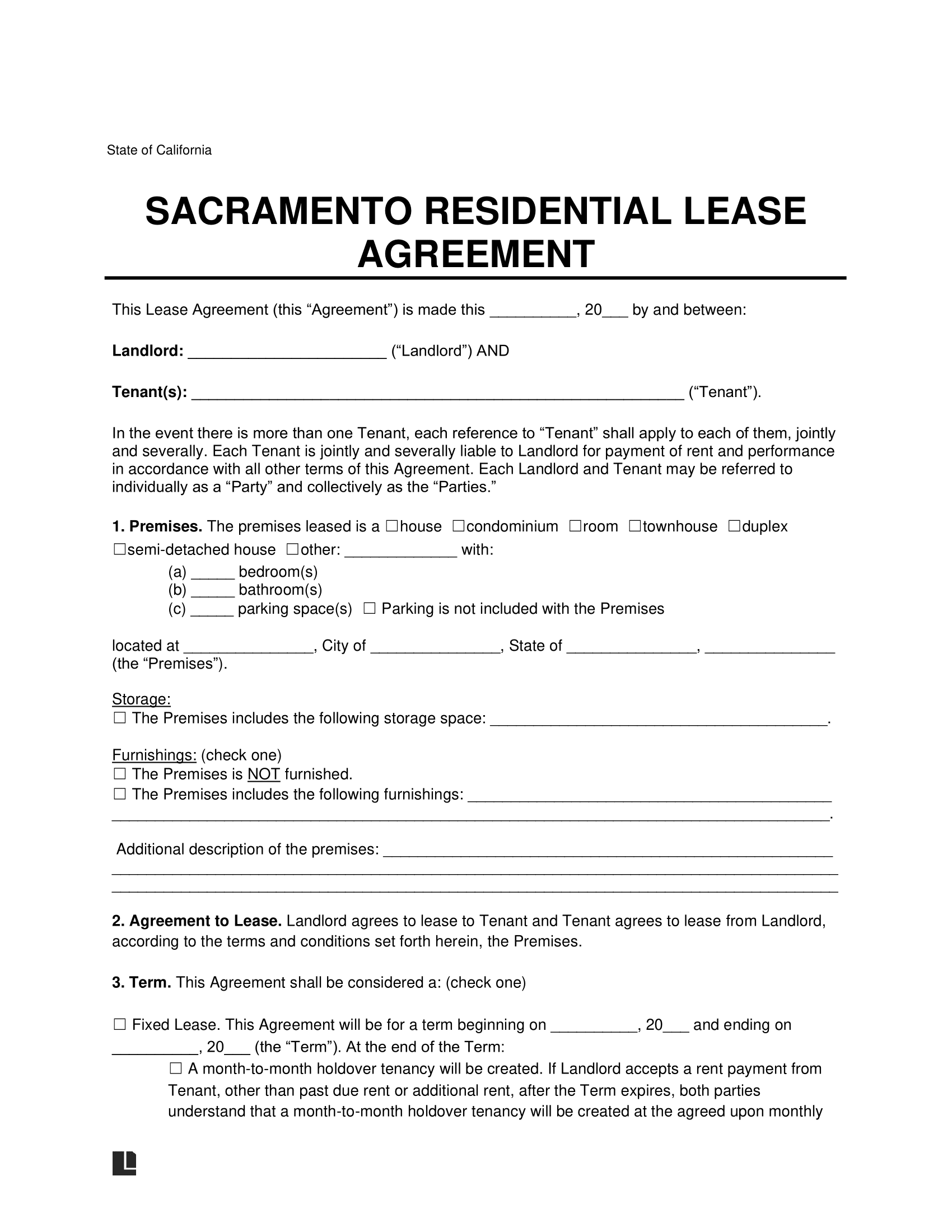A Sacramento lease agreement is a legal document outlining the terms and conditions of a rental arrangement between a landlord and a tenant. It includes provisions on the duration of the lease, the amount of rent, payment schedules, security deposit requirements, rules for the use of the property, and responsibilities of both parties.
Sacramento Lease Requirements
While landlords in Sacramento must abide by California’s lease agreement requirements, there are other city-specific regulations to consider:
Tenant Protection and Relief Act Ordinance
The Tenant Protection and Relief Act protects residents of Sacramento against unjust evictions and excessive rent increases. According to this ordinance, landlords are prohibited from evicting tenants without a valid reason, particularly those who have resided in a rental unit for over 12 months.
Justifiable causes for eviction include non-payment of rent, refusal to grant landlord access to the property, engaging in criminal activities, landlord occupancy needs, and breaching the terms of the lease agreement (Sacramento Municipal Code Sec. 5.156.090).
Rental Housing Inspection Program
Sacramento’s Rental Housing Inspection Program is crucial in maintaining adherence to health and safety regulations across rental properties. Property owners must participate by registering their properties and submitting a rental housing program registration form for each rental unit.
Optional Lease Disclosures and Addendums
Though not obligatory, landlords have the option to include specific disclosures and addendums in their leases. This practice assists in defining tenant responsibilities and can help prevent future potential liability issues:
- Fire safety disclosure: Due to California’s heightened wildfire risk, landlords may consider incorporating a fire safety disclosure into the lease agreement. This disclosure should offer information regarding smoke detectors, fire sprinklers, fire safety systems, alarms, and evacuation plans.
- Asbestos disclosure: Considering California’s status as the leading state for asbestos-related deaths, landlords should provide a disclosure indicating whether asbestos is present on the property. If detected, tenants should take precautions to minimize the risk of disturbing fibers.


